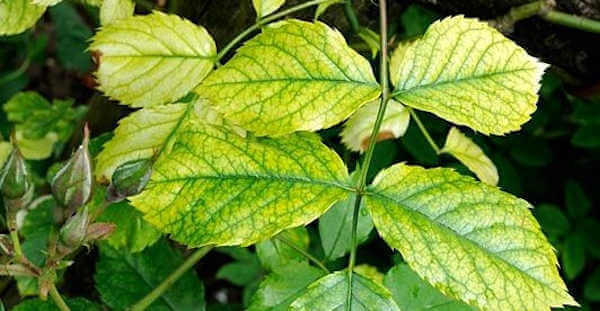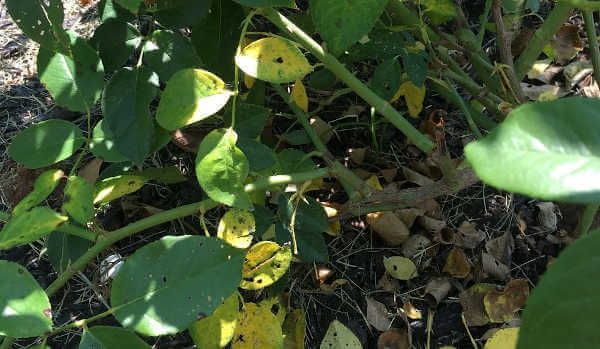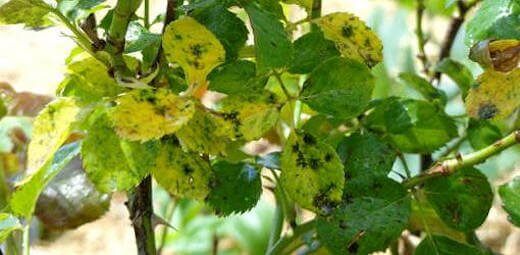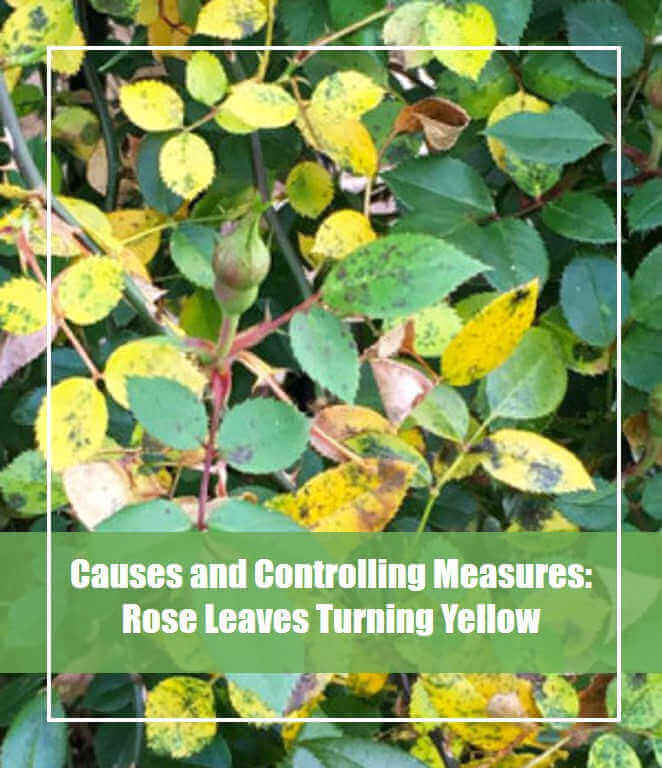Are the rose leaves turning yellow and falling off? You don’t know what you should do and how to combat this problem?
Don’t worry, you are not alone. It is one of the common problems for the rose gardeners that may easily fix. Sound simple, but it isn’t-
Because there are many reasons for this problem. Generally, the rose leaves can turn yellow because of chlorosis, less and overwatering, lack of sunlight, heat stress, nutrient deficiency, soil pH, pest, and diseases.
Without taking the proper step or wrong treatment can kill your rose plant. So, you must identify the main culprit before taking any control measures.
In this article, I have discussed the possible reasons and provided the 360-degree solution for getting rid of yellow leaves of the rose.
So, let’s get started-
The Causes and Treatment of the Yellow Leaves of Rose
Now, I will help you to identify what actually happens to your rose bushes and prescribed the right solution to get rid of this.
#Chlorosis

Chlorosis is the yellowing of the plant leaves for the lack of chlorophyll. There are two types of chlorosis. Chlorosis and Interveinal chlorosis.
Causes
It will happen because of the deficiency of nitrogen, oxygen, or iron. Generally, nitrogen or oxygen deficiency can be the cause of chlorosis but iron deficiency is the cause of interveinal chlorosis.
Interverinal chlorosis is more complex than chlorosis and it mostly occurs to the rose bushes. Sounds sad, right? But have a simple solution. Keep reading-
The main reason for the iron deficiency in the plant is the high soil pH. You should know, Rose plants can’t absorb the required iron because of high pH. If the pH will be not high, then it may be the cause of iron deficiency in the soil.
There are also some secondary reason of the interveinal problem such as compact soil, high salt, and manganese and zinc deficiency in the soil
Identification
If the leaves of the rose turn yellow and curl but the vein remains green, then it will be caused by iron deficiency.
But if the vein also turns yellow as well as leaves, the chlorosis occurs due to oxygen deficiency or poor drainage facilities.
Want to know the easy way to identify iron deficiency?
Then you should know, Upper leaves or young leaves turn yellow because of iron deficiency and nitrogen behaves the opposite.
Controlling Measures and Prevention
Here I will give you only the treatment of interveinal chlorosis. Because iron can increase the availability of nitrogen. So, If the chlorosis occurs due to nitrogen deficiency, you don’t need to add extra nitrogen.
Let’s learn how to fight against interveinal chlorosis-
Rose love slightly acidic soil. Test the soil pH with a pH meter(our pick: Atree Soil pH Meter). If the pH is high, add some acid-forming fertilizer (sulfur, peat moss, or leaf mold). But if the pH already remain under 6.5, add some iron amendments such as greensand, cottonseed meal, Iron tone or Ironite(our pick: Espoma IT5 Iron Tone )
If you need a quick solution, then forget all. Just apply 1/4 teaspoon of iron chelate or iron sulfate on rose bushes.
Here are the best iron chelate for your rose plant-

To prevent chlorosis-
Improve the soil drainage, don’t overwater, and remain the soil pH not up to 6.5
#Less and Over Watering

Causes
The plant removes water through photorespiration. If the photorespiration rate is higher than the absorbed water, wilting will take place. As a result, the leaves become yellow.
Thereafter, overwatering decreases the oxygen level of the soil. So plant leaves turn yellowish.
Identification
Less and over watering of rose plants show the same symptom; yellow leaves. So it is a little bit tricky to understand the actual problem.
Let me simplify it-
Is the weather too hot and rose leaves turn yellow? Then poke the finger into the soil as far as you can. If the soil feels dry, water your rose plant. You can also use a moisture meter for more accuracy.
Also, if you see the soft shoots and stems become droopy before yellowing the leaves then it may happen because of water deficiency.
On the other hand, if the soil becomes wet and stems are still firm but the leaves turn yellow, it may be the cause of overwatering.
Controlling Measures
Never apply too much water to the rose plant. Apply a small amount of water more frequently. Generally, 8-10 inches of water per 2-4 days is enough for rose bushes.
To prevent the overwatering-
Add some good drainage potting mix(our pick: Miracle-Gro Expand ‘N Gro Concentrated Planting Mix) and improve the drainage facilities.
#Fertilizing Problems
Feeding the proper food is essential for healthy and green rose bushes. You know, leaves turn yellow because of nitrogen deficiency. How to know the yellow leaves cause of nitrogen deficiency?
If the lower leaves turn yellow and upper young leaves remain green, you have to understand the yellow leaves cause of nitrogen deficiency.
But too much nitrogen can make plants green and bushy without any blooms. So, you need to feed slow-release balanced fertilizer to your roses.
Here is the recommended rose fertilizer for you–
#Pests
Causes
Pests and insects can damage the leaves as well as the entire rose plant. Japanese beetles, thrips, aphids, sawflies, and grasshoppers are the most harmful insects to the roses.
They suck the plant sap and insert toxin substances into the plant tissue. As a result, black and yellow spots appear on the leaves that develop and occupy the whole leaves. Sometimes, pets eat the leaves tissue and
Identification
Observe the plants carefully. If you notice any insects on the plants, the yellow leaves for insects. Generally, insects stay on the undersurface of leaves when they aren’t active. So check the underneath of the leaves.
Controlling Measures
If the number of insects is small, kill them manually by hand. But the number is high or doesn’t have enough time, then spray Ready to Use Insecticidal soap, neem oil, or any organic insecticide to kill the rose insects.
Here are the recommended insecticidal soap, neem oil for your rose bushes. You may pick anyone to give away the insects from the rose bushes-
#Disease

Some fungal diseases such as black spots can turn your roses leaves yellow. At first, black and dark spots appear on the leaves, then they become yellow and fall off.
Controlling Measures and Prevention
At first, remove the affected leaves carefully and destroy them. Take into consideration that the affected leaves don’t come in contact with green leaves. Now spray fungicide until the whole plant wets.
You know-
Black spots can be caused by fungus. It is too difficult to control fungus if they develop once successfully. So prevention is the best idea. To prevent fungal diseases as well as yellow leaves of roses-
Don’t spray water to the foliage. If it is necessary to wash the leaves, spray water in the early morning. As a result, the plant will get enough sun to dry the water.
Start applying neem oil or organic rose fungicide before the 2 weeks of wet and rainy season comes.
Here is the best fungicide for black rust on your roses-
#Environmental Problems
Heat stress and shade are the main environmental problems for growing roses that cause yellow leaves.
If the weather is too hot, apply cedar mulch or any light-colored mulch to protect the plant from heat stress.
Here is the recommended cedar mulch for roses-

It is also important to know when the best time to water the rose plant is. Experts recommend watering the roses in the early morning or early evening.
You know that rose plant needs at least six-hour sunlight. Otherwise, the plant grows slowly and leaves turn yellow.
So place the potted rose or plant the roses in the place where they get at least 6-hour sunlight.
Conclusion
Remain the soil pH below 6.5, feed the right rose fertilizer, maintain watering schedule, improve drainage, provide adequate sun, and kill the insects and fungus to get rid of yellow leaves of roses.
So, what are you waiting for?
Plucked the yellow leaves, identify what is the possible reason for it, take the right action, and save the rose plant.


